|
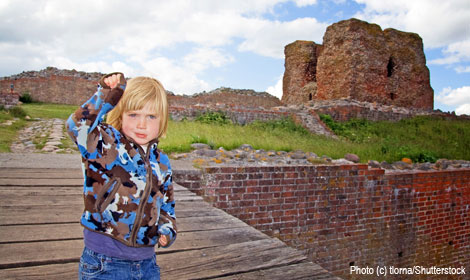
Life Learning and History
By Eva Swidler
Life learners walk a challenging line. We are all too aware of the hidden curricula, unspoken lessons, and invisible social forces that our kids would face were they in school. Those are some of the most powerful reasons that we don’t send our kids to school in the first place. Similarly, we know that the media and the sea of other manifestations of corporate culture that we and our kids are surrounded with carry culture, meaning, conclusions, and assumptions and can shape both our thinking and our actions heavily. Although life learners have varying approaches to how their children interact with the corporate media, most if not all of us are interested in describing and acknowledging the presence of corporate (I refuse to call it “popular”) culture in our lives, so that we can reflect and make conscious decisions about participation in or disengagement from it.
However, we also sometimes want to believe that when we don’t send our kids to school and pursue a life learning path, we have thereby removed them, and us, from all unspoken lessons, and can just allow learning and growing to unfold and take a “natural” path.
Having that necessary faith that our kids can and will learn what they need to learn puts us in a sometimes uncomfortable tension with active choices about editing, restricting access, or critiquing specific parts of the larger culture. Sometimes it is easier to turn away from the possibility that there are unacknowledged, unspoken lessons that we get in life learning that we should perhaps be just as vigorous about exposing and being conscious of as the troubling paradigm of school that we are so very vigilant about.
One area in which many life learning families are particularly conscious of the messages sent by school is in the subject of history. Most homeschoolers know that history as it is taught in most schools consists largely of dates and names, pretty successfully stamping out what should be a natural interest children have in how our ancestors lived and how we came to be where we are. (I believe that schools’ deadening approach is an important part of why our culture has the saying “That’s history!” to indicate irrelevance.) Most of us are therefore particularly interested in bringing history back alive again.
We also generally agree that textbooks are vetted and chosen by politicized school boards and various government agencies to cultivate certain kinds of patriotism, national pride, and origin myths, and to avoid too much attention to troubling aspects of history. Part of what life learners hope to do in keeping our kids out of school is to circumvent that carefully constructed depiction of history that textbooks present. (Historian James Loewen believes that schools’ sanitized rendition of history and purposeful avoidance of controversies in the past are another reason why so many school students reject, refuse, and even hate the subject of history.)
So we life learners have removed our children from the hidden and not so hidden historical curriculum of school. We are faced with the next question: When, instead of using textbooks, we pursue a life learning path to an understanding of history, what kinds of history might we be learning, what kinds of messages do our histories contain, and is that history always that different from the “approved” version that we so carefully avoided?
Going to various national historic parks, local museums, and living history sites, and reading from the wealth of historical novels and biographies available are some of the ways that homeschoolers bring a sense of history alive as opposed to enforcing the rote memorization of names and dates. The sense of the vitality of the past that we get is very different from school-based history. But is the historical account that we engage in these more spirited ways so superior to the one presented in school books? Or might those narratives of history we’re taking up also be ones worth a closer look?
Because historians know that the story being told is always created by and therefore shaped by the person telling it and their motives, historians have a few questions which they universally use in interpreting so- called primary or historical texts, a category which includes things like speeches, articles, diaries, or treaties. We life learners can use these very questions too, to help us think about the histories that we are being presented with outside of school. The primary three questions every historian asks before even starting to read a document are: Who wrote this? Who was their audience, i.e. who did they write this for? And finally, what did the author want the audience to do or think as a result of reading the document?
Answering these three questions lets us surface the author and their motives. I add two more questions, which are also frequently asked by historians: Who is missing, or invisible, or being presented as unimportant in this version of a historical story? And last but certainly not least, what are some possible other ways of telling this story? (Many facets of an account become apparent only when we compare that account to other alternative ones.)
Anyone who has spent much time with media literacy will recognize a lot of chords here in these questions. Asking these kinds of questions and thinking in this way is how we adults make sense of political campaigns, advertising, and even family arguments. These are questions we encourage our kids to ask about commercials. Truly, these are questions that we probably would naturally ask about history too, if we weren’t vigorously trained out of this kind of skepticism, and told to suspend our disbelief and accept history as a single, objectively told, set of facts.
By asking these questions of not only primary sources – those historical documents, diaries, eyewitness accounts, famous speeches etc. – but also of what professionals call public history (i.e. historical parks, monuments and markers, or museums) as well as historical novels, documentaries, and all the other ways that history can be learned, we can excavate the hidden lessons and curriculum that are there, so that we can build a history of our own rather than passively absorbing one given to us. Just making that first move of stepping back and realizing that there are competing understandings of history, and that we can and should make investigations and judgments about them, is the most important turning point, just as stepping back from school opens the door to oh so many paths.
I don’t want to be misunderstood here; historians don’t think that anything goes and that any way we want to tell the story of the past is okay. After all, if that were so, there would be no point in studying history! It would consist of whatever we wanted to believe, and contain no meaning or message. What historians want us all to do is take responsibility for reflecting on and weighing the history we believe, rather than blindly accepting what is handed to us from on high.
History as historians have studied it for the last fifty years looks pretty different from what is in textbooks, and even from a lot of those biographies of early political figures that endlessly feature on the bestseller lists. For whatever interesting political or cultural reasons, there hasn’t been much trickle-down from what professional historians have done and thought and taken for granted for decades into what is still taught in schools and many (though not all) public historical sites. How can life learners begin to find some of the tremendous number of interesting histories out there which are alternative to the school books, and which usually do have to be actively sought out?
First, don’t feel overwhelmed. Remember, the most important step has been already taken once you know that you are looking, not just receiving what is out there. It’s amazing what you will find once you are on the alert.
Public library systems can be a real boon. Peruse the books there, and ask your children’s librarian for help. Independent bookstores (not stores in the big chains) can be treasure troves as well, especially ones with a social or political bent. Book store owners are very careful curators of their stock. And whether you are looking for resources on your own or with help, some of the following starting points will help you.
Since the 1960s, there has been a tremendous amount of research into what is known in the trade as “social history.” Using that phrase in searches, or more likely the more popular phrase “people’s history,” will help you find accounts that see history as made by all people rather than by a few elite Greats, whether they are presented as Great by virtue of social class and power or by virtue of genius or ability. Howard Zinn’s teenage level A People’s History of the U.S., as well as its counterpart for younger readers A Young People’s History of the U.S., are classics. Philip Hoose’s We Were There Too! Young People In American History looks to be a social history classic in the making.
I also consciously look for histories and historical novels written by as well as about people who are missing from the approved narrative: women, racial/ethnic minorities, the lower classes, and colonized people. (Remember, historians agree that not just the topic but who does the writing makes a difference). Some of my favorites here are the historical novels of Katherine Paterson (Lyddie and Bread and Roses, Too are among my daughter’s favorites); the wonderful Birchbark House series by the Native American literary author Louise Erdrich, designed to be an Anishinabe reply to the Little House on the Prairie series (my daughter has read them all five times and eagerly awaits the next in the series coming out this fall); African American historical novels by Harriette Robinet, the Collier brothers James and Christopher, and Christopher Paul Curtis; and many wonderful books by Lawrence Yep about both Chinese-American and Chinese history. (His Spring Pearl: The Last Flower about the Opium War is in the unlikely and very spotty American Girls series entitled “Girls of Many Lands.”)
We’ve also found great labor fiction for older children and young adults about girls in the Triangle Shirtwaist Factory fire and boys who are miners. The key is to be on the lookout!
For young adults and parents alike, James Loewen’s best-seller Lies My Teacher Told Me analyzes what our history textbooks leave out, while the follow-up volume entitled Lies Across America discusses historical monuments and parks in a parallel way. She Would Not Be Moved: The Way We Tell the Story of Rosa Parks and The Montgomery Bus Boycott by Herbert Kohl gets right to the heart of bowdlerized history-telling in schools. The websites historicalthinkingmatters.org and sheg.stanford.edu link to curricula and material intended for teachers to use in a classroom, but which are also great for teens to use on their own or parents to use with younger kids. These sites instruct on and offer material to practice those skills of critical reading of primary documents and history that historians themselves do.
But don’t worry that only older kids are capable of this kind of historical literacy. In fact, young children spontaneously understand the concept of perspective and hidden agenda really well! (How many times have you heard on the playground, “You’re just saying that because...” A born historian!) James Loewen and Herbert Kohl both tell stories of teaching school children in the early grades how to understand multiple versions of history side by side, ask the hard questions about sources and motivations, and come to their own conclusions. Loewen describes a class in which a grade school group independently concludes that a series of South Carolina state historical markers reflected the fact of their being written during the civil rights era. (In effect, the markers were pushing back at new interpretations of African American history that were emerging at the time.)
I think critical reading skills are essential. I think historical consciousness is crucial. I am a historian, after all, but I think that many of us agree that how we think about “what really happened” is vital. What are our prospects for the future? What could the world realistically be like? Who is it that is going to bring about that world, and how? What we think “really happened” in the past will shape the answers to these vitally important questions for the future. Historians passionately believe that these questions matter, but children and parents committed to schooling, and to the dictated curricula that come with that educational and life choice, rarely have the possibility of really thinking about the answers. Life learners can lead the way.
Ten Questions To Ask At a Historic Site
1. When did this site become a historic site? (When was the marker or monument put up? or the house “interpreted”?) How did that time differ from ours? From the time of the event or person commemorated?
2. Who sponsored it? Representing which participant group’s point of view? What was their position in social structure when the event occurred? When the site went “up?”
3. Why? What were their ideological needs and social purposes when the site went “up?” What were their values?
4. Who was/is the intended audience for the site? What values were they trying to leave for us, today? What does the site ask us to go and do?
5. Did they have government support? At what level? Who was ruling the government at the time? What ideological arguments were used to get the government to acquiesce?
6. Who is left out? What points of view go largely unheard? How would the story differ if a different group had told it? Another political party? Race? Sex? Class? Religious group?
7. Are there problematic words or symbols that would not have been used today, or by other groups?
8. How is the site used today? Do continuing rituals connect today’s public to it? Or is it ignored? Why?
9. Is the presentation accurate? What actually happened? What historical sources tell of the event, people, or period commemorated at the site?
10. How does this site fit with others that treat its era? What other people and events happened then but are not commemorated on the landscape? Why not?
List by James W. Loewen from Lies Across America: What Our Historic Sites Get Wrong (Touchstone, 2007). Reprinted with permission. Also see http://sundown.afro.illinois.edu/liesacrossamerica.php
Eva Swidler lives in Philadelphia with her husband and their daughter who has never been to school. She juggles spending time with her family, being part of an anarchist bookstore collective, seeking out community and teaching history at Goddard College. Her essay Culture and Community was published in Life Learning Magazine in 2008 and also included in the book Life Learning: Lessons from the Educational Frontier.
Copyright © Life Media
Privacy Policy
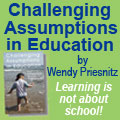 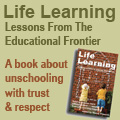 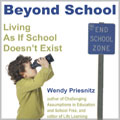
 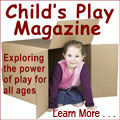 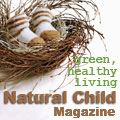
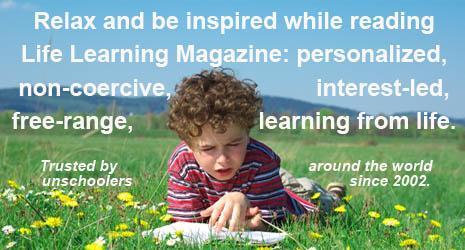
|

